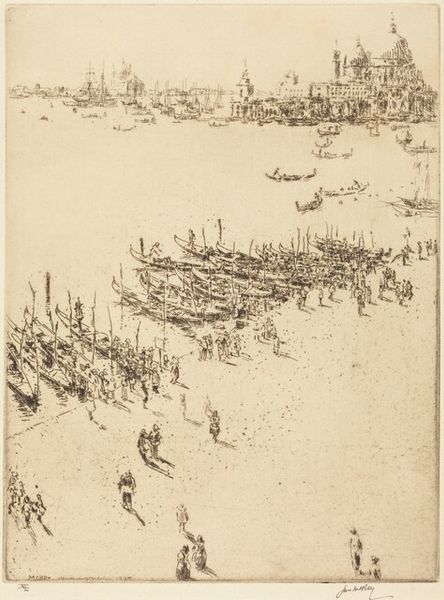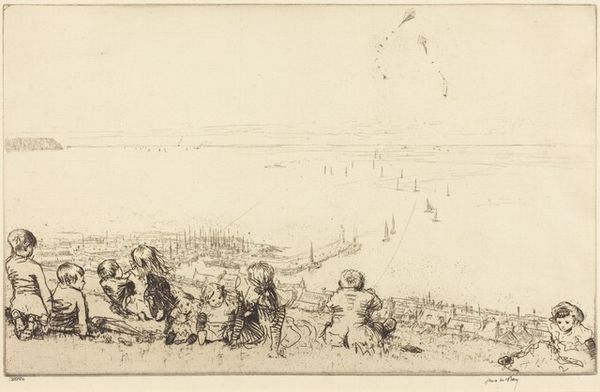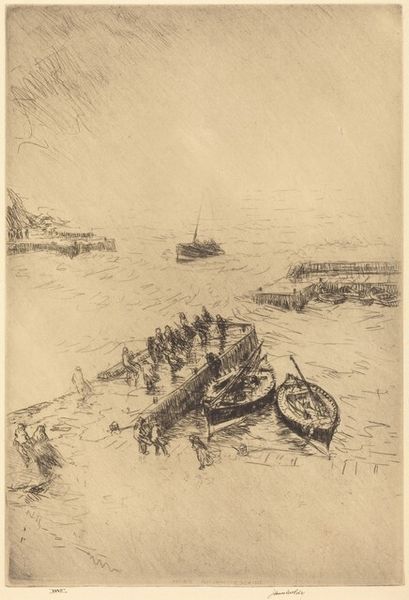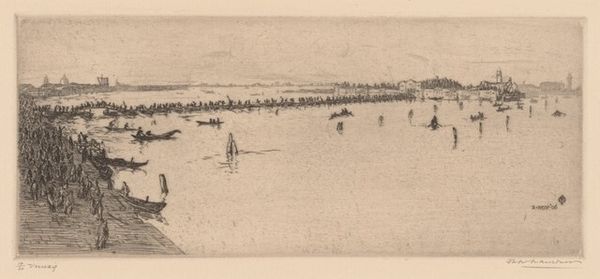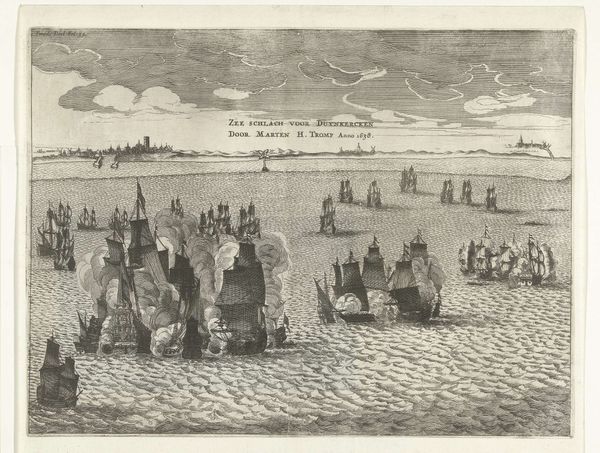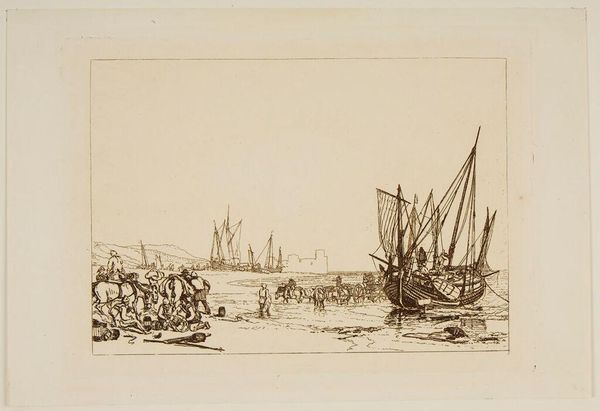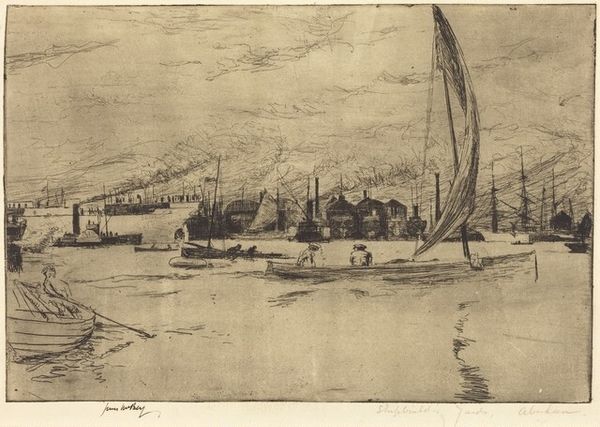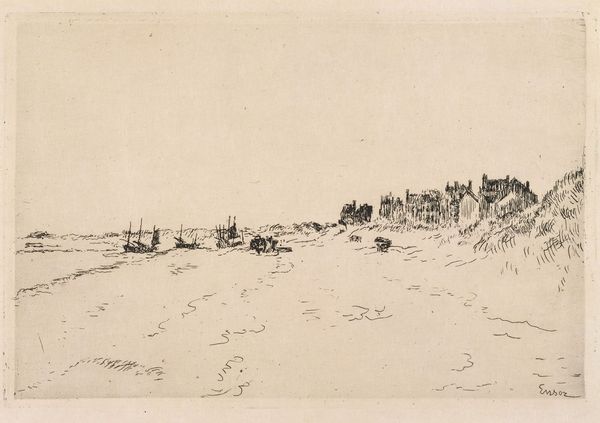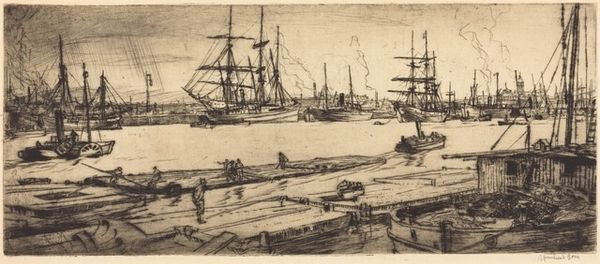
drawing, print, etching, ink
#
drawing
#
ink drawing
# print
#
etching
#
landscape
#
figuration
#
ink
Copyright: National Gallery of Art: CC0 1.0
Editor: This is "Phoenician Coast," an etching by James McBey from 1934. There's a lot happening – a coastline teeming with figures and animals, almost chaotic, but somehow very balanced by the ships on the horizon. What stands out to you? Curator: The density of labor is really striking. Look at how the etching medium allows McBey to meticulously depict this coastal community. Consider the manual process, the acid biting into the metal, mirroring the physical exertion depicted within the scene. Each line, each mark, signifies an action, labor reflected both in the making and in the image itself. Editor: So you see a connection between the labor of the people depicted and the labor involved in creating the artwork? Curator: Absolutely. And look at the scale – an etching. It inherently challenges grand narratives often associated with paintings. Etchings were more easily disseminated, more democratic in their accessibility. How does that accessibility change who is more able to enjoy the artwork and possibly participate in the commerce surrounding it? Editor: That's interesting, I hadn't thought about it that way. It makes you consider the social and economic impact of the materials themselves. Curator: Exactly! The etching medium, traditionally considered "minor" compared to painting or sculpture, democratizes representation. McBey elevates a common coastal scene through his technique, asking us to reconsider the hierarchy between art and craft, between high and low culture. And who gets represented? We must also consider whose labor *isn’t* depicted. Editor: I’m beginning to appreciate how even the choice of materials shapes our understanding of the scene and its potential audience. I guess you could say the medium truly is the message, in more ways than one. Curator: Precisely! It reminds us that the meaning is not just in the subject matter, but also in the very process of creation and its context within systems of production and consumption.
Comments
No comments
Be the first to comment and join the conversation on the ultimate creative platform.
